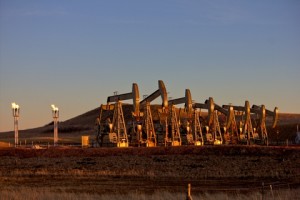The first U.S. refinery built in over 30 years began operations this week.
The Dakota Prairie refinery is located on 375 acres in Stark County, four miles west of Dickinson, N.D. and is in a prime location to access critical infrastructure such as rail, highway, natural gas, electricity, water and sewer.
Construction on the facility began in 2013 as a joint project of MDU Resources Group Inc. and Calumet Specialty Products Partners LP, with a price tag of $400 million.
The refinery will process 20,000 barrels of crude oil per day of locally sourced Bakken crude oil. Diesel sales are expected to begin this month with almost all of the fuel staying within a 50-mile radius of Dickinson.
“We need to invest in our nation’s energy infrastructure,” Sen. John Hoeven, R-N.D., said in a statement. “The Dakota Prairie Diesel Refinery is a good example of the kind of infrastructure investments that will help ensure a bright energy future for North Dakota and our nation. We are pleased to see production underway at the refinery. This facility is creating jobs and helping to grow our domestic energy production, which in turn will help to make our nation more energy secure.”
Read more at marketwatch.com





